Trump in Saudi Arabia salutes mighty little US city with global impact in war and diplomacy
US-Saudi relations forged on warship built in city that ignited American Revolution, ended WWII
Heavy cruiser USS Quincy (CA71) packed alotta life into just five years of service to combat and to diplomacy.
Enough action to earn a shoutout from President Trump in Saudi Arabia on Tuesday.
“Ever since President Franklin Roosevelt met with King Salman's father, King Abdul Aziz aboard the USS Quincy in 1945, the US-Saudi relationship has been a bedrock of security and prosperity,” Trump said in the first 90 seconds of his 50-minute address at the US-Saudi Investment Forum in Riyadh.
USS Quincy was namesake of the city that built her: Quincy, Massachusetts. It’s a 400-year-old community of 100,000 residents that should be recognized as the most historic city in the US — with more contributions to American independence and the defense of freedoms than its more famous next-door neighbor, Boston.
The unheralded USS Quincy provides a perfect metaphor for its unheralded hometown.
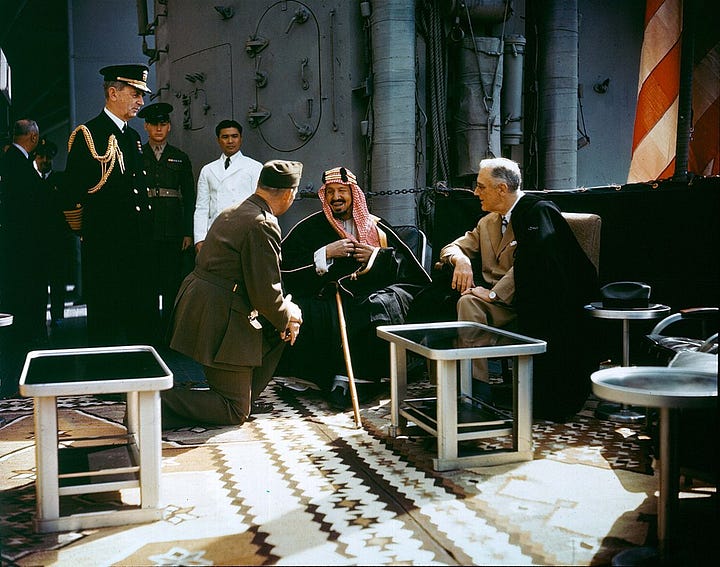

She was launched June 22, 1943 at the Bethlehem Steel Fore River Shipyard in Quincy and fought for the first time off of Utah Beach on June 6, 1944. Yes, the USS Quincy was untested the morning of D-Day and a combat veteran by night — just like many of the men on the beaches.
Two months later she participated in Operation Dragoon, the large but largely unknown invasion of France’s Mediterranean coast.
The USS Quincy was on the other side of world by spring 1945 to support the epic three-month Battle of Okinawa. She sailed triumphantly into Tokyo Bay on September 1 to help enforce the surrender of Imperial Japan the following day.
Tokyo was not USS Quincy’s first service to diplomacy. The dauntless cruiser earned mention from the Commander in Chief in Saudi Arabia Tuesday for a secret mission between her two-ocean war.
The Quincy returned stateside from Europe in late 1944 and in January picked up a passenger who had a few meetings to attend overseas.
USS Quincy ferried President Franklin D. Roosevelt from Newport News, Virginia to meet Prime Minister Winston Churchill and Soviet hatchet man Josef Stalin at the Yalta Conference in February 1945. With victory over National Socialist Germany now apparent, the Allied leaders began mapping out the postwar world.
USS Quincy welcomed the Commander in Chief back aboard on February 12. She hosted the president for a series of further meetings with King Farouk of Egypt, Emperor Haile Selassie of Ethiopia and King Abdul Aziz of Saudi Arabia.
“The (Saudi) King and the President got along famously together,” American diplomat William A. Eddy, who attended, later wrote of discussions still consequential for our world today.
Aziz denied Roosevelt’s request to support the creation of a Jewish state in the Middle East after the war. But they laid the foundation for today’s often uncomfortable relationship.
“They eventually came to an agreement that centered around U.S. support and military training for Saudi Arabia … in return for oil and political support in the region,” the Washington Post reported in 2015.


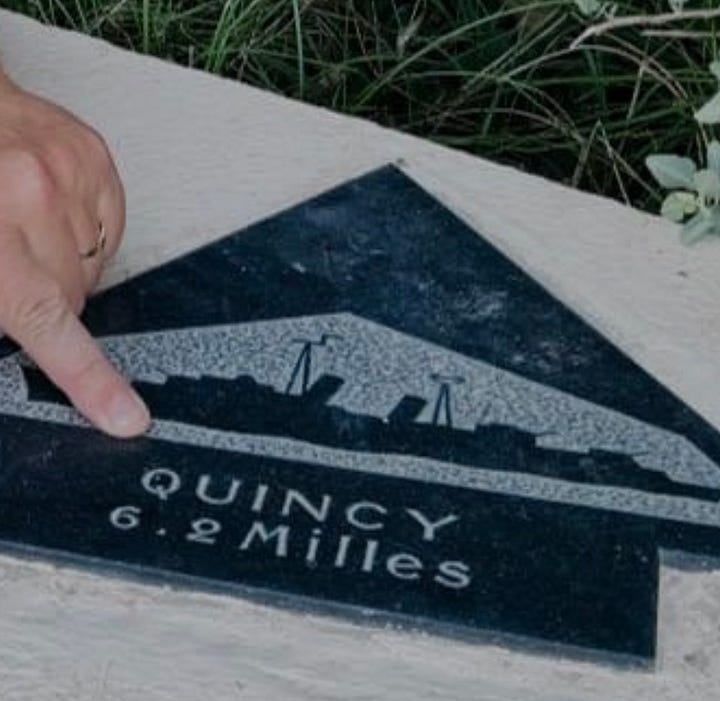
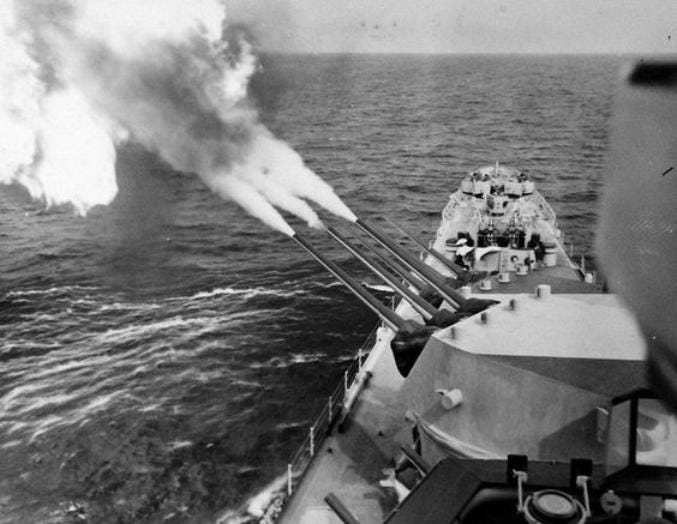
“The core themes of the Saudi-U.S. relationship established at that meeting – security and oil – have endured.”
The home of the US ambassador in Saudi Arabia is named Quincy House in honor of the ship’s role in diplomacy. It houses a large model of USS Quincy.
Her bell serves as a monument in Quincy to the city’s shipbuilding heritage, which dates back to the 1600s.
It’s the same mighty little city that ignited the American Revolution, flexed its global industrial muscles on America’s first day of World War II, and brought both conflicts to an end.
John Adams and John Hancock were both born in Quincy. Boston is often cited as birthplace of Samuel Adams. But Quincy has better claim: early biographies and family sources today cite Quincy, not Boston, as his birthplace.
Quincy, if true, is the only community in America that boasts three Founding Fathers and three signers of the Declaration of Independence. They were central figures, too: J. Adams the brains, Hancock the bank and S. Adams the brawn behind independence.
Sixty-nine veterans of the American Revolution are buried in Quincy’s Hancock-Adams Common, as is Hancock’s father, the Rev. John Hancock. He was minister of the church across the common. John and Abigail Adams are entombed in that church today.
The roots Quincy’s Founding Fathers planted in the city’s soil spread across the globe in World War II.
Six Quincy-built warships were in Pearl Harbor on Dec. 7, 1941, including USS Nevada (BB36). She was the only dreadnought to sail from Battleship Row that day and begin the long journey back to defeat Imperial Japan by sea.
The fleet of famous World War II vessels built in Quincy also includes battleship USS Massachusetts (BB59), docked in Fall River, Mass., and aircraft carrier USS Lexington, now in Corpus Christi, Texas. Both are floating museums and National Historic Landmarks.
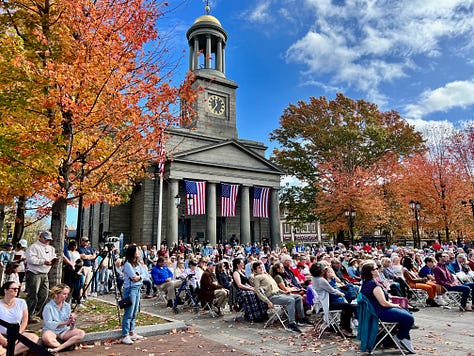
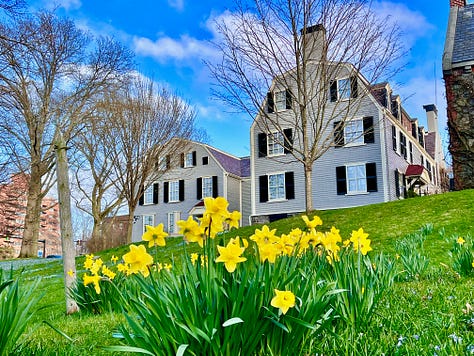


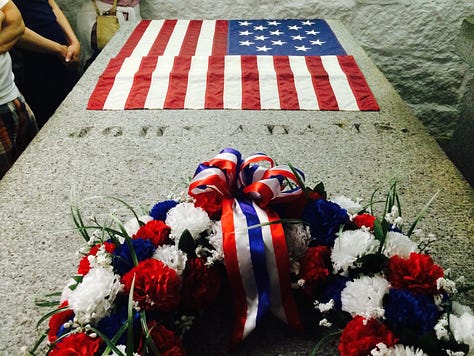

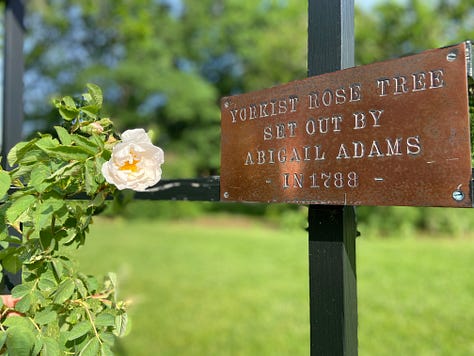
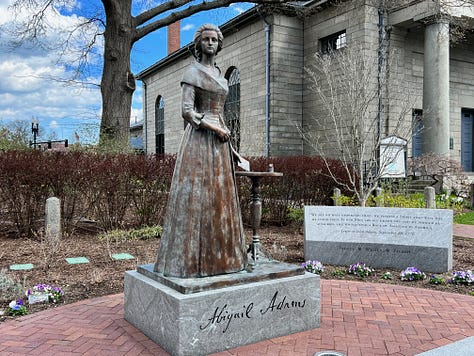
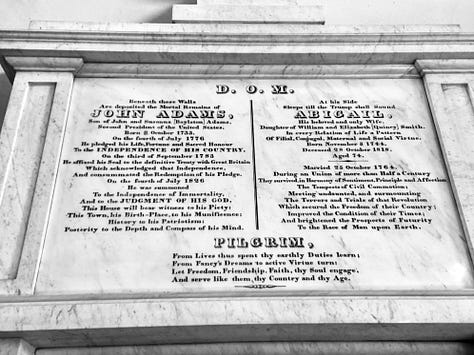
The Nevada joined the USS Quincy at Utah Beach in 1944, prompting one sailor to enthuse with football analogy about the firepower he witmessed on D-Day.
"Commenced firing! Look out, Hitler!” F.D. King, serving on USS Quincy, wrote in his diary. “All the ships are pouring shells into the beach and that it's an All-American team in a single wing-back formation; the NEVADA, QUINCY & TUSCALOOSA in tailback position."
Minutes later he added: "Another direct hit for the Mighty Q on #2 target."
Quincy knows how to start a fight. And it knows how to end a fight.
John Adams led US negotiations at the Treaty of Paris after the American Revolution and returned to Quincy in 1783 with formal international recognition from the British of US sovereignty.
USS Quincy was one of just 11 cruisers built in #TheMightyQ that lorded over Tokyo Bay as the surrender formally ending mankind’s deadliest war was signed on Sept. 2, 1945.
The USS San Diego (CL53) led the American armada into Tokyo Bay, in honor of her spectacular record of combat success, with 18 battle stars. Yes, she was born in Quincy.
The city of Quincy served the cause of peace in World War II only after flexing its oversized muscles in the dastardly devilment of mankind’s tragedy of armed conflict.
Army Air Force pilot Major Charles Sweeney flew the B-29 that dropped the second atomic bomb on Nagasaki on August 9, 1945 – pushing fanatical Imperial Japan to finally surrender.
Major Sweeney is the man who ended World War II. He was a 1937 graduate of North Quincy High School.
The city’s legacy has continued in recent years. Marine Corps Gen. Joseph Dunford, Chairman of the Joint Chiefs of Staff from 2015 to 2019, was raised in Quincy. So, too, was Gen. James McConville, Army chief of staff from 2019 to 2023.


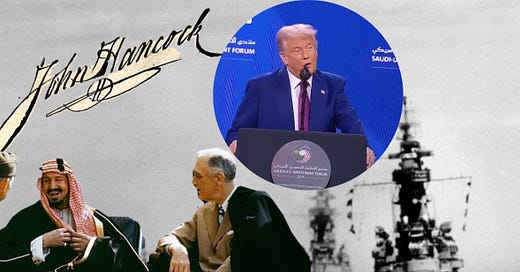





Decent work but Quincy didn’t spark the revolution. Maybe a revolution in whores and flounders. It’s embarrassing to be mentioned by that hun moron Trump in the presence of those fucking Saudi infidels who caused 9-11.
Are you still worried about the Jihad against out state flags, or can you still see it after the Saudis gave you a facial for jerking off their so called history